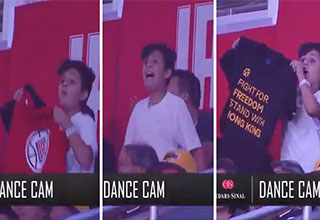The history of Paintball. Seriously, it's as close to the whole
HISTORY OF PAINTBALL
1970: Although it would not be used as a "paintball marker" for another 11 years, it was in 1970 that Crossman, the airgun company patented the first paintball marker: the 707 The purpose of this marker was to mark trees and cattle. (Daisy made the famous 007 soon after).
1981: In June of 1981, 12 friends went into the New Hampshire woods with Daisy markers, oil based paint, and shop goggles. They played a game in which the goal was to capture each player's flag--12 flags in all. The winner (Ritchie White) captured all 12 flags and never fired a single shot.
1982: The first commercial paintball field (outdoor field) opened its doors. Caleb Strong (who would become one of the better known tournament players in the world in the late 1980s on his team called the PMI Piranhas) opened the first field in Rochester New York.
1982: Bob Gurnsey saw the potential of what went on that day in the woods in 1981. He approached Nelson, the company that made the paintballs for forestry and cut a deal to buy directly from them. He then marketed paintball under the name "National Survival Game. (NSG)" Pursuit Marketing Inc, (PMI) also entered the paintball marketplace and has grown into one of the largest distributors in the world since.
1983: The first NSG paintball tournament was held.
1984-85: Paintball spreads to England and Australia.
1991: Paintball spreads again, this time into mainland Europe.
1991: The first International Amateur Open took place. It was sponsored by California Magnum Paintballs. Bad Company won the five-man portion of the event.
1992: After years of playing the lively tournament circuit, the players call a "players only" meeting to discuss starting a player-run league. They met in Chicago and formed a league which they called the National Professional Paintball League (NPPL).
1993: The NPPL ran four events in their first season as a new league.
1994: ESPN filmed and aired segments of the DC Cup, promoted by PCRI in Washington DC.
1994: WARPIG.com went online as the first paintball-only website.
1996: ESPN produced and aired the ESPN World Championships of Paintball. Rage, with Todd Adamson as captain, won the event.
1998: The first Skyball event took place.
2002: The PSP (Paintball Sports Promotions Inc.) and what was known as the NPPL split after the World Cup. The PSP will continue to run events under the NPPL structure as will Chuck Hendsch, the NPPL's President, using the name NPPL Super 7's.
<DEFINITION OF A PAINTBALL>
A paintball is a round, thin-skinned gelatin capsule with colored liquid inside it. Paintballs are similar to large round vitamin capsules or bath oil beads. The fill inside paintballs is non-toxic, non-caustic, water-soluble and biodegradable. It rinses out of clothing and off skin with mild soap and water.
<DEFINITION OF MARKER>
Paintball guns, also called "markers," come in a variety of shapes and styles. They may be powered by carbon dioxide (CO2), nitrogen (N2) or compressed air. Many have power systems that use large refillable cylinders called "tanks" or "bottles" that give hundreds of shots before needing to be refilled. Some use small 12-gram CO2 power lets as their power source; each power let being good for 15 to 30 shots.
<SAFETY>
Goggles must be worn during a game and at all times when a person is in an area where shooting is permitted, such as the target range or chronograph area. Paintball is a very safe sport as long as safety rules are followed. Insurance statistics have shown that paintball is safer than golf, jogging, tennis, and many other sports. For example:
-----------------
Paintball has a 0.31 per 1000 accident rate
Bowling has a 0.50 per 1000 accident rate
Golf has a 1.13 per 1000 accident rate
Baseball has a 27.67 per 1000 accident rate
(PaintCheck Magazine, June 1989, page 38)
-----------------
<WHO PLAYS?>
Paintball is a sport played by people from all professions and lifestyles. It is a sport where women and men compete equally, and where age is not dominated by youth. Like a game of chess, being able to think quickly and decisively is what makes you a star in paintball. Intelligence and determination, not merely strength, speed or agility, are key to success in the sport. Paintball is a character-building sport. Players learn about teamwork, gain self-confidence and develop leadership abilities while having fun and getting welcome stress-relief. Increasingly, corporations are finding the benefits of having their staff and management participate in paintball games.
<FIRSTS: Companies and Guns>
The Nelson Paint Company was founded in 1940 by Charles and Evan Nelson... Faced with marking trees in hard to reach places, Charles Nelson invented a paint pellet that could be shot out of a gun.
The first gun specifically designed for playing Paintball was the Splatmaster invented by Robert G Shepherd. U.S. patent number 4,531,503 was issued to Shepherd on July 30, 1985. Later electro pneumatic markers were developed like the Shocker and the Angel.
First Semi Tippmann SMG-60 (inline) followed by the PMI III or Sheridan VM68 which was a stacked design.
First Electro-pneumatic - PVI Shocker (later bought by Smart Parts)
----------------------
<TYPES OF PAINTBALL >
Recball or woods play –
recball is usually associated with woods ball; uses natural obstacle rather than artificial bunkers. Camouflage and stealth are widely used as main tactics. The original survival game.
Speedball –
The general word used for fast game play, indoor or outdoor fields. With 3, 5, and 10 man teams. The field is comprised of bunkers, or obstacles. There are several variants, but most include capturing the flag or eliminating all other opponents.
Hyperball or Hyperpipe –
using long, tall pipes as bunkers. They are laid down or are standing. This game is won by using angles and quickness because the bunkers are hollow.
Airball –
Uses large, inflatable bunkers. Advantages to these include being able to push in the bunker with your barrel. Used often in tournaments.
Spool Field –
uses giant spools used originally for large coils of wire. Very interesting bunkers.
Scenario paintball –
Involves a story and usually extended game play. Up to 24 hrs, even longer perhaps. Famous scenarios are Wayne Dollack games; recball is associated with scenario games typically.
X-Ball –
made to be more like a sport, there are quarters (timed; like a football game) and points are made by getting a flag hang (grabbing the flag). There are penalties and many other sport-like aspects such as substitutions.
Stock Class Paintball-
Uses 12 gram powerlets, limited balls (10-20), no sights, and pump only guns. A true challenge.
<TYPES OF GUNS>
MECHANICAL – Uses a sear, hammer, bolt, and valve to fire the gun
Bolt-action –
The very old, original paintball gun. It works like a pump, only it doesn’t have a pump arm to recock it. (no longer made)
Ex. Nelson 007 and 707, NSG Splatmaster
Pump–
Pull the trigger and the sear releases the bolt and fires a paintball, a pump handle is then used to push the bolt back into a cocked position on the sear.
Ex. Sheridan PGP, CCI Phantom
Stacked Blowback –
Most common marker, the bolt is stacked on the hammer, or striker. The hammer is tripped by the sear, and then gas is used to fire the ball. The same gas is used to push the bolt back, which then catches on the sear again.
Ex. Kingman Spyder, PMI Piranha, F4 Illustrator
Inline Blowback –
same idea as a stacked blowback, only the bolt is in the same chamber as the hammer.
Ex. Tippmann 98
Hybrid Blowback –
Once again the exact same thing; except instead of a mechanical device, an electrical solenoid is used to trip the sear. (AKA sear- trippers)
Ex. Kingman Electra, M3 Black Dragun
Blowforward –
It doesn’t have a hammer, the trigger is pulled and the bolt slides forward, once over the valve it fires the ball. It does not use excess air to fire the bolt back though. (may look similar to an Inline Blowback)
Ex. AGD Automag, ICD Desert Fox
Auto-cocking –
A pump with pneumatic cocking rods that will automatically cock the gun. (in other words if you took off the pneumatic rods and put on a pump arm, it would be a pump)
Ex. WGP Autococker, BE Rainmaker
ELECTRO-PNEUMATIC – Doesn’t have a sear, uses a solenoid and electro-pneumatics to fire the ball.
Spool –
Doesn’t have a hammer or a traditional valve. A sequence of pneumatic controlled rams move air to the ball.
Ex. SP Shocker, Diablo Matrix
Rambolt –
Uses traditional hammer, bolt, and valve. But the hammer is loaded with a pneumatic ram, which will "ram" the valve.
WDP Angel, SP Impulse
<CLOSED AND OPEN BOLTS>
Closed –
Not necessarily the fact that the bolt is covered; almost all pumps are closed bolts because the gun doesn’t cock the bolt. Semi-auto Closed bolts merely cock themselves.
Ex. SP Shocker (Pre 2k3 only), WGP Autococker
Open –
All guns that aren’t closed bolt operation.






2 Comments